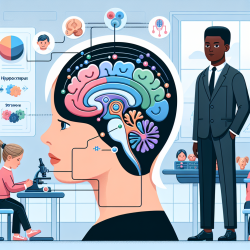Introduction
As practitioners dedicated to improving the lives of children with ADHD, we often seek evidence-based strategies to enhance our interventions. The research article "Hyperactivity and Motoric Activity in ADHD: Characterization, Assessment, and Intervention" offers valuable insights into understanding and addressing hyperactivity in ADHD. By focusing on data-driven decisions, we can refine our approaches and achieve better outcomes for children.
Understanding Hyperactivity and Motoric Activity in ADHD
Hyperactivity is a core symptom of ADHD, characterized by excessive motor activity that can disrupt cognitive and social functioning. The research highlights that while children with ADHD exhibit increased physical activity, they are less likely to engage in regular vigorous physical activities. This paradox underscores the need for targeted interventions that address both hyperactivity and physical inactivity.
Assessment Methods: A Data-Driven Approach
The article emphasizes the importance of using both subjective and objective assessment methods to detect hyperactivity and motoric activity in ADHD. Subjective methods, such as rating scales, provide valuable insights but may lack precision. Objective methods, like accelerometers, offer a more accurate measure of physical activity levels. By integrating these methods, practitioners can gain a comprehensive understanding of a child's activity patterns.
Intervention Strategies: Leveraging Physical Activity
Physical activity interventions have shown promise in modifying hyperactivity symptoms in children with ADHD. The research suggests that vigorous physical activities can improve mood, executive functioning, and inhibition performance. These interventions not only address ADHD symptoms but also enhance overall well-being, making them a vital component of a holistic treatment plan.
Encouraging Further Research
While the current research provides a strong foundation, there is a need for further studies to explore the optimal dose-response relationship of physical activities for children with ADHD. Understanding how different types and intensities of physical activities impact ADHD symptoms can lead to more tailored and effective interventions.
Conclusion
By embracing data-driven insights and integrating physical activity into our interventions, we can empower children with ADHD to achieve better outcomes. As practitioners, it is our responsibility to stay informed and continuously seek evidence-based strategies to enhance our practice.
To read the original research paper, please follow this link: Hyperactivity and Motoric Activity in ADHD: Characterization, Assessment, and Intervention.










